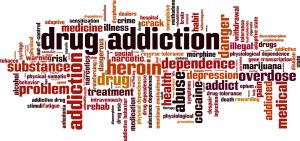

What is Physiology? Exploring 7 Core Concepts
Introduction
Physiology, the life science, reveals the fundamental processes that allow organisms to function. This field focuses on how cells, tissues, and organs communicate and respond to changes, balancing biological systems to maintain life. The study of physiology bridges biology with health and medicine, providing insights into how our bodies operate and adapt under different conditions. From understanding cellular function to interpreting responses to environmental factors, physiology holds a wealth of knowledge that informs various fields, including medicine, sports science, and psychology. Let’s explore the seven core concepts that structure this fascinating discipline.
1. Homeostasis: The Balance of Life
Homeostasis is the body’s mechanism for maintaining internal stability despite external fluctuations. This balance is crucial for survival, keeping factors like temperature, pH, and glucose levels within narrow limits. For example, when body temperature rises during exercise, homeostatic mechanisms, such as sweating, activate to restore balance. The concept of homeostasis also extends to complex feedback systems that involve the nervous and endocrine systems working together. Understanding homeostasis is fundamental in physiology because it explains how the body sustains optimal function amid constant changes.
2. Cellular Communication: The Language of Cells
Cells must communicate effectively to coordinate activities across tissues and organs. Cellular communication relies on signaling molecules, such as hormones and neurotransmitters, that bind to specific receptors on target cells. These molecules transmit messages that regulate vital processes, from muscle contraction to metabolic regulation. For instance, the hormone insulin communicates with cells to help regulate blood glucose levels. Through cellular communication, physiology unravels how cells maintain internal order and work together to support complex bodily functions.
3. Energy Metabolism: Fueling Biological Processes
Every action performed by the body, from breathing to thinking, requires energy. Metabolism encompasses the chemical reactions that convert food into usable energy through pathways like glycolysis and oxidative phosphorylation. This energy fuels cellular activities and powers the physiological processes needed for growth, repair, and maintenance. The study of energy metabolism helps us understand how the body manages energy resources, influences physical performance, and adapts to metabolic changes, whether during exercise or at rest.
4. Structure and Function: The Anatomy-Physiology Connection
The concept of structure and function examines how the physical attributes of cells, tissues, and organs relate to their specific roles. In physiology, this principle underscores that form is designed for function. For example, the structure of red blood cells, with their concave shape, allows for efficient oxygen transport. Likewise, the intricate folding of the intestines provides a large surface area for nutrient absorption. Physiology explains how biological design supports diverse life processes by studying structure-function relationships, enhancing our understanding of human anatomy and its practical applications.
5. Adaptation and Evolution: Responding to Change
Adaptation is an organism’s ability to modify physiological processes in response to environmental or internal challenges, which, over generations, contributes to evolutionary changes. For example, populations living at high altitudes adapt to lower oxygen levels by increasing red blood cell production. This adaptability is a key feature of physiology, illustrating how organisms adjust to ensure survival and reproduction. Adaptation and evolution in physiology provide insights into species’ long-term survival and explain how human bodies have evolved to meet diverse environmental demands.
6. Biological Rhythms: The Body’s Internal Clock
Biological rhythms are cycles within organisms that follow a regular pattern, such as circadian rhythms, which operate on a 24-hour cycle. These rhythms regulate various physiological processes, including sleep-wake cycles, hormone release, and metabolism. Circadian rhythms are influenced by environmental cues, primarily light and darkness, and help organisms synchronize bodily functions with their surroundings. Understanding biological rhythms reveals how disruptions, like jet lag or shift work, can impact health, demonstrating the profound influence of timing on physiological processes.
7. Regulation of Body Functions: The Role of Feedback Systems
Feedback systems are mechanisms that regulate physiological processes to maintain stability. In physiology, feedback can be positive or negative. Negative feedback loops counteract changes in the body, ensuring that conditions remain within ideal ranges. For instance, when blood pressure rises, negative feedback mechanisms work to bring it back down. Positive feedback, although less common, amplifies changes, as seen during childbirth, where contractions intensify until delivery. Feedback systems demonstrate how physiology maintains order, providing a framework for understanding body regulation.
Conclusion
Physiology’s core concepts are integral to our understanding of life. From homeostasis and cellular communication to adaptation and biological rhythms, these principles offer a comprehensive view of how organisms function and respond to various stimuli. They highlight the interconnectedness of body systems and underscore the importance of balance, communication, and adaptation. As we deepen our knowledge of physiology, these concepts illuminate the complexity of living systems and guide advancements in health, medicine, and biology.




